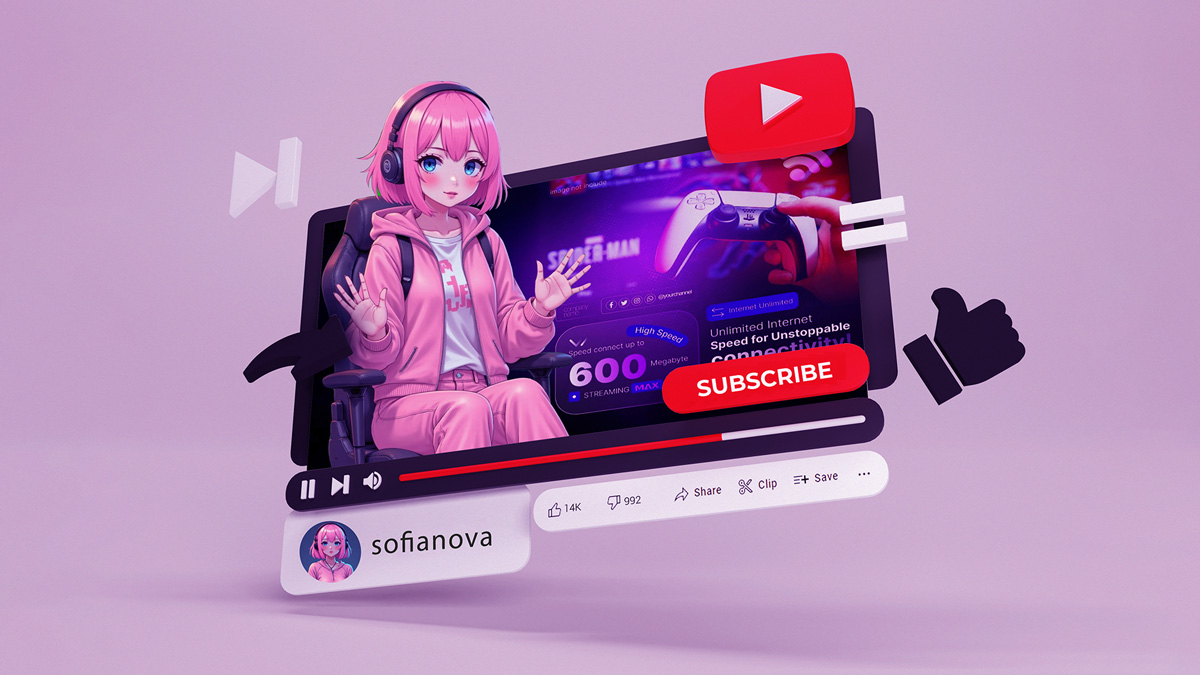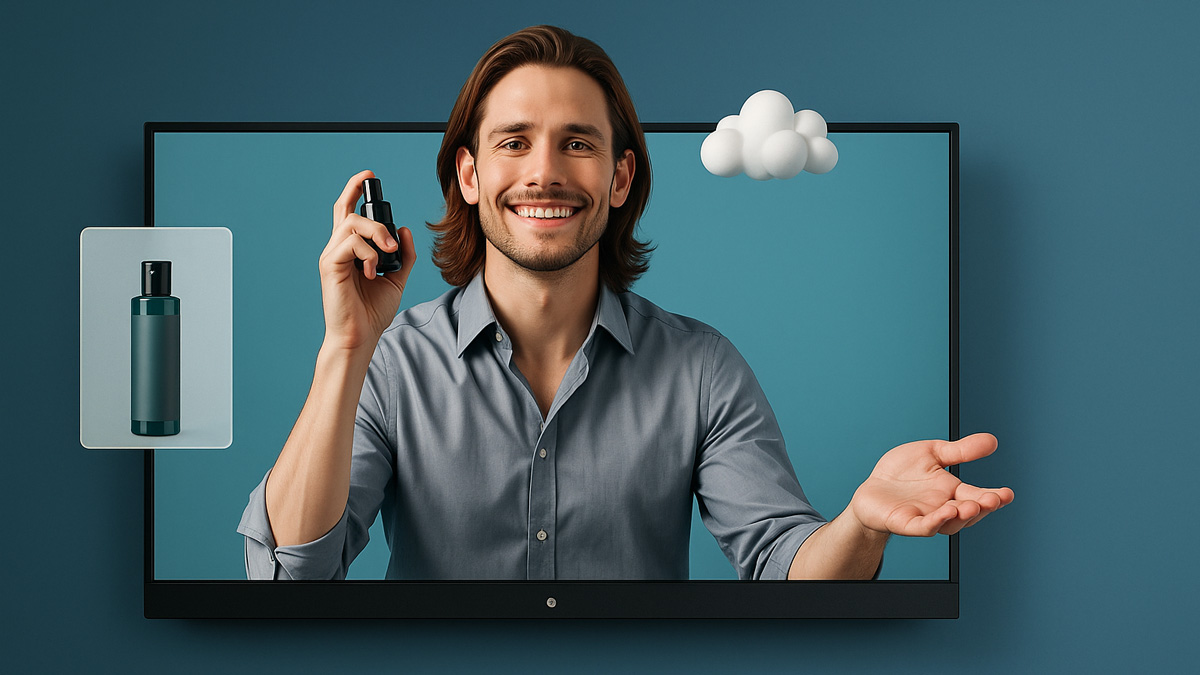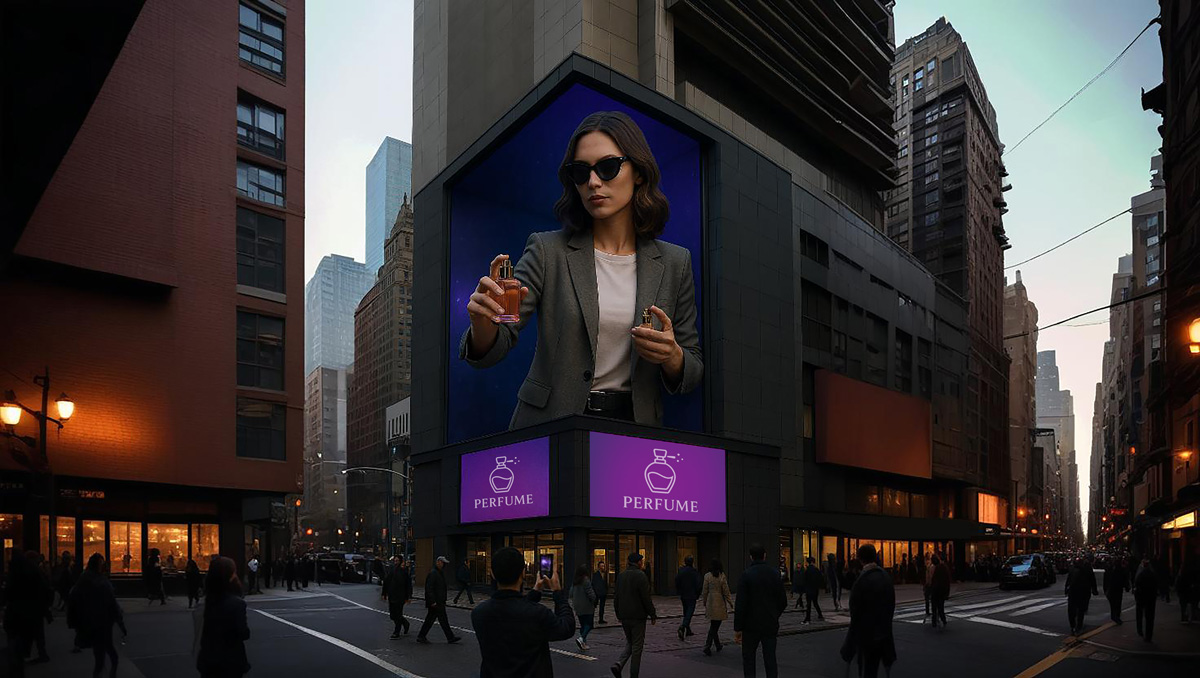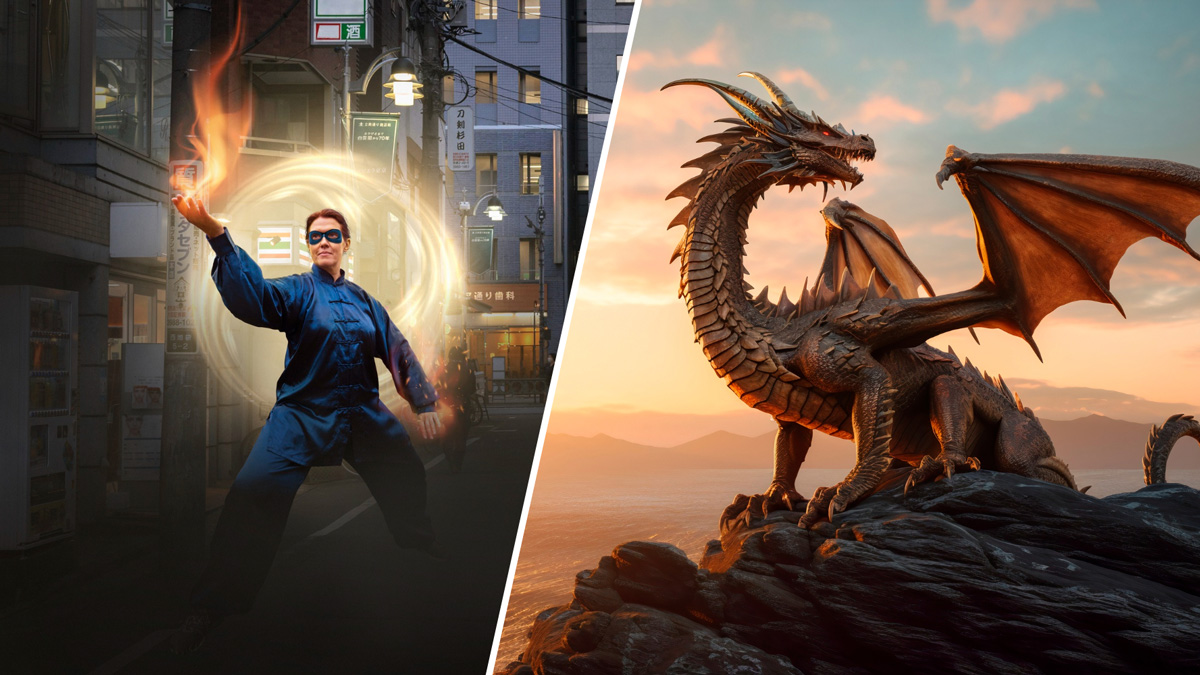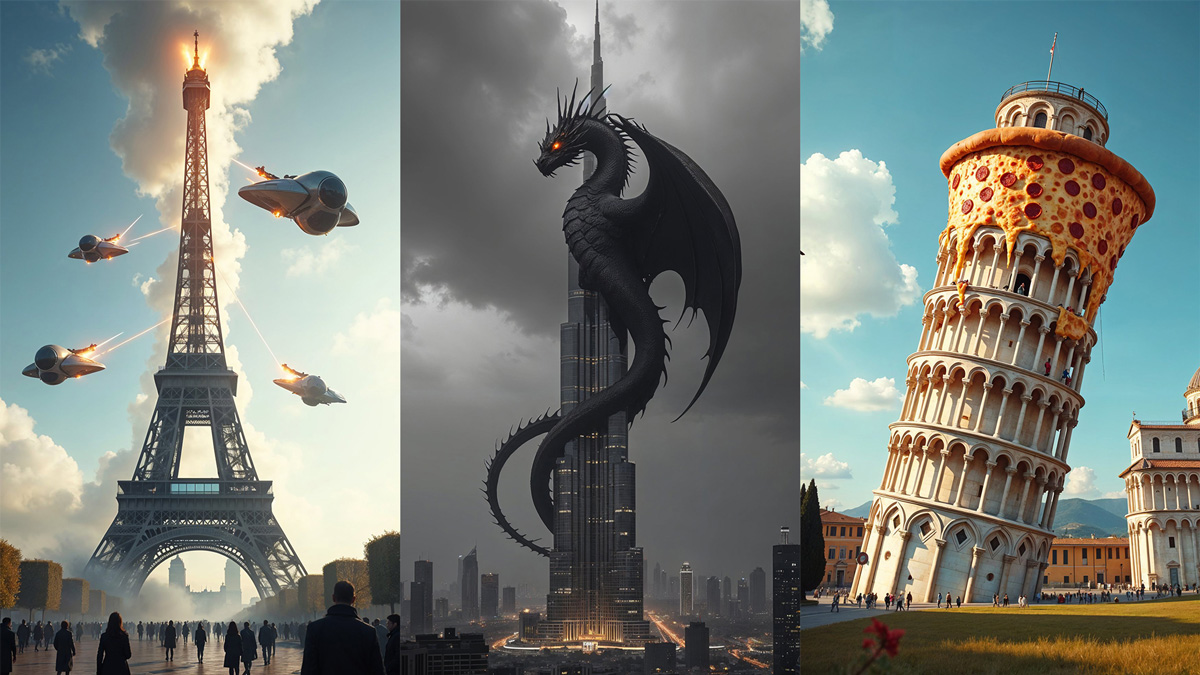
- CGI Fundamentals in Marketing
- Benefits of CGI Integration
- Applications of CGI in Digital Marketing
- Developing Effective CGI Marketing Strategies
- Successful CGI Advertising Campaigns
- Challenges & Ethics of CGI in Marketing
- Future Trends in CGI Marketing
- Getting Started with CGI in Marketing
- Elevate Your Brand with Stunning CGI Content.
Imagine a luxury watch glistening under a golden sunset—every detail flawless, every reflection perfect. Now, what if I told you none of it was real?
Computer generated imagery (CGI) is revolutionizing marketing, allowing brands to craft stunning visuals, immersive experiences, and bold campaigns—without the limits of traditional production. From hyper-realistic product showcases to viral animated ads, CGI is transforming how businesses engage their audiences.

In this article, we’ll explore how brands use CGI to captivate, innovate, and stay ahead in the digital era. Let’s dive in!
CGI Fundamentals in Marketing
Before diving into the practical applications and strategies, let’s solidify our understanding of Computer-Generated Imagery (CGI) within the dynamic domain of modern marketing. CGI has come a long way from its origins in entertainment, now standing as a tool for brands looking to create viral or memorable content.
Defining CGI
At its core, CGI in Marketing refers to the use of computer software to generate digital images or animations for promotional purposes. Its growing importance stems from its ability to overcome the limitations of traditional visual media, offering marketers unprecedented creative control, flexibility, and cost-effectiveness.
I remember scrolling through Instagram one day and coming across a stunning ad for a luxury watch. The watch was sitting on a rocky cliff, with waves crashing in the background and the sunlight hitting it just right, making it shimmer like something out of a dream. For a moment, I thought, “Wow, they really went to a crazy location to get this shot.” But then I found out it was all CGI—every detail, from the watch to the ocean, was created on a computer.
That’s the magic of CGI in marketing. It lets brands create these incredible, larger-than-life scenes without actually needing to go anywhere. Think about a chocolate ad where the syrup flows perfectly over the candy or a car commercial where the vehicle zooms through futuristic cities. None of it has to be real anymore, but it feels real enough to grab your attention.
CGI makes it easier for marketers to try bold ideas without the limits of traditional shoots. And as a viewer, it’s honestly pretty cool to see these “impossible” worlds come to life.
According to recent industry reports, CGI Software Market size was valued at USD 80 Billion in 2022 and is projected to reach USD 120 Billion by 2030, growing at a CAGR of 6.4% from 2024 to 2030, driven by its adoption across industries like e-commerce, automotive, and fashion. Are you ready to explore how this technology can redefine your brand’s visual storytelling?
CGI Evolution in Marketing
Initially seen as a luxury reserved for the film and gaming industries, CGI has taken the marketing world by storm. What started as rudimentary applications has evolved into a sophisticated tool, thanks to advancements in computing power and software capabilities. Today, brands can create photorealistic and highly engaging CGI content that captivates audiences and drives results. For instance, companies like IKEA and Nike have embraced CGI to showcase products in ways that were once impossible to film. The question is no longer if CGI will transform marketing, but how far it will go.
Importance for Brand Experiences
The true power of CGI in Marketing lies in its ability to craft visually compelling and deeply immersive brand experiences. In today’s fast-paced digital world, where consumers are bombarded with information, captivating visuals are no longer a luxury—they’re a necessity. CGI helps brands cut through the noise, grabbing attention, simplifying complex information, and forging emotional connections with their audience. Studies show that brands using CGI in their campaigns often see a significant increase in customer engagement compared to traditional methods. How can you leverage this power to make your brand stand out from the crowd?
Benefits of CGI Integration
The strategic integration of CGI in Marketing unlocks a treasure trove of advantages that can significantly enhance your marketing effectiveness and operational efficiency. These benefits go beyond aesthetics, offering tangible and strategic advantages across campaign development and execution. Let’s dive into the key benefits that make CGI a game-changer for modern marketers.
Cost Efficiency
One of the most compelling benefits of embracing CGI in Marketing is its potential for substantial cost savings compared to traditional photography and videography. By eliminating expenses tied to physical set construction, location scouting, talent acquisition, and travel logistics, CGI allows brands to achieve more with less.
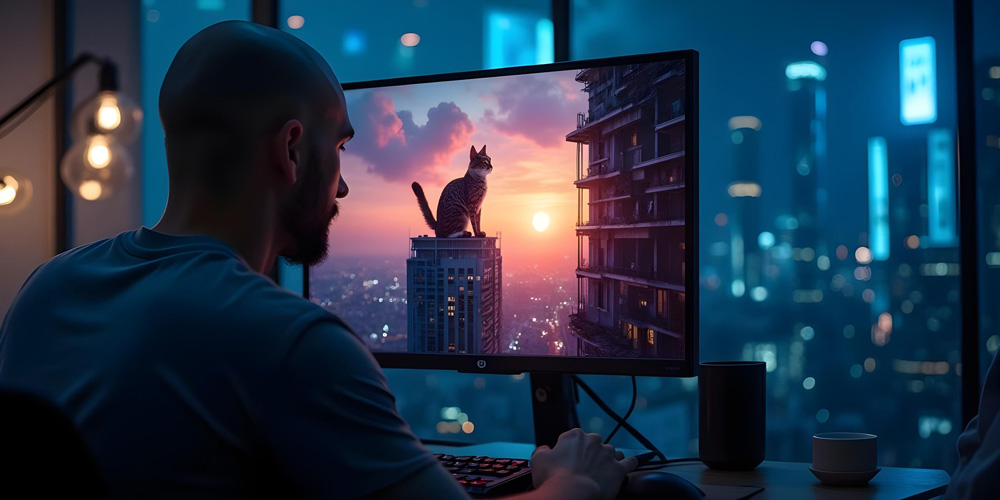
For example, showcasing a new line of furniture in various simulated home environments becomes far more economical with CGI—requiring only digital rendering of the furniture and virtual settings. Industry reports suggest that CGI can reduce production costs by up to 60% in certain scenarios. Imagine reallocating those savings to other critical marketing initiatives, giving your campaigns a bigger bang for your buck.
Creative Flexibility
CGI significantly enhances creative possibilities in marketing. This technology overcomes the limitations of traditional filming, enabling the visualization of scenarios that are difficult or impossible to capture with conventional methods. For instance, showcasing a vehicle’s performance in extreme conditions or illustrating the internal workings of a complex product are readily achievable with CGI. This expanded creative flexibility allows for the development of distinctive and impactful brand communication. The focus shifts to strategically leveraging these capabilities to effectively convey key product features and brand messages. What stories will you tell when the only limit is your imagination?
Personalization Capabilities
Given the intense competition today, personalization is critical, and CGI Marketing excels in this area. While fully dynamic, AI-driven personalization is still evolving, CGI already enables the creation of tailored visual content that resonates with specific audience segments. Imagine showcasing a customizable product, like a laptop, with different color options and feature configurations based on individual user preferences or browsing history. This level of visual customization not only enhances engagement but also boosts relevance and conversion rates. By making your marketing feel personal, you can hit the nail on the head with your audience.
Sustainability Advantages
In an era where environmental consciousness is paramount, the sustainability of CGI in Marketing is a standout advantage. By reducing reliance on resource-intensive physical production processes, brands can significantly minimize their carbon footprint. Think about the savings in travel, material waste, and energy consumption when sets and locations are created digitally. This commitment to sustainability aligns perfectly with the growing consumer preference for eco-friendly brands. By choosing CGI, you’re not just marketing smarter—you’re greening your brand and showcasing your commitment to a sustainable future.
Applications of CGI in Digital Marketing
The remarkable versatility of CGI in Marketing makes it a powerful tool across a wide range of digital marketing channels. From enhancing e-commerce experiences to creating immersive brand environments, CGI is transforming how brands connect with their audiences. Let’s explore some of the most impactful applications of CGI in digital marketing, backed by the latest data and trends.
E-commerce Product Visualization
One of the most prevalent and impactful uses of CGI in Marketing is in e-commerce product visualization.
High-fidelity CGI renders allow online retailers to showcase products with unprecedented detail, highlighting intricate textures, nuanced features, and key functionalities that traditional photography might miss. Additionally, interactive 360-degree views and virtual try-on tools—especially useful for industries like fashion, jewelry, and eyewear—are revolutionizing the online shopping experience.
These tools not only reduce product return rates but also boost customer satisfaction. Studies show that product pages featuring 360-degree CGI views experience an average 50% increase in conversion rates, up to 32% higher page visit duration, and even reduced returns by 15-50%. Ready to take your product presentation to the next level?
Immersive Brand Environments
CGI in Marketing empowers brands to create captivating virtual environments that immerse audiences in their unique brand narrative. These digital spaces can host a variety of engaging experiences, such as innovative product launches, interactive virtual tours of facilities, immersive brand experience centers, and large-scale virtual events. These experiences allow consumers to connect with a brand’s core values, history, and vision in a way that traditional advertising simply can’t match. By transporting your audience into a virtual world, you can paint a picture that leaves a lasting impression.
Viral Social Media Content
Social media thrives on visually captivating and shareable content, making CGI in Marketing an ideal tool for creating buzzworthy and potentially viral campaigns. Platforms like Instagram, TikTok, and even emerging metaverse environments are perfect for showcasing innovative and visually stunning CGI content. These campaigns have the power to capture fleeting attention spans, spark conversations, and significantly boost brand visibility and organic reach. The novelty and visual appeal of well-executed CGI often lead to higher engagement rates, increased shareability, and a greater return on your social media investment. How can you create content that stops the scroll and grabs attention?
AR/VR Customer Experiences
CGI in Marketing is the foundation for creating compelling Augmented Reality (AR) and Virtual Reality (VR) customer experiences. AR applications overlay digital CGI elements onto the user’s real-world environment, allowing them to interact with products in practical and engaging ways—like visualizing furniture in their living room before making a purchase. VR, on the other hand, creates fully immersive digital worlds, perfect for product demonstrations, virtual store visits, or even training simulations. The AR market alone is projected to reach $97.76 billion by 2028, highlighting the growing importance of CGI in shaping the future of customer interaction. Are you ready to step into the future of engagement?
Developing Effective CGI Marketing Strategies
To effectively harness the immense power of CGI in Marketing, a well-defined, strategic, and adaptable approach is essential. These proven strategies can help you maximize the impact of your campaigns, achieve your marketing objectives, and drive tangible business results. Let’s dive into the key strategies that can take your CGI efforts to the next level.
1. Integrating CGI with Traditional Channels
The most impactful CGI Marketing Strategies often involve a seamless integration of CGI with traditional marketing channels. Think beyond isolated digital campaigns—CGI can breathe new life into print ads, billboards, and even physical events. For example, augmented reality (AR) elements in print ads can unlock interactive digital experiences, while animated CGI billboards can grab attention in high-traffic areas. This blended approach allows you to leverage the strengths of both digital and traditional media, creating a more comprehensive and engaging campaign. By bridging the gap between the physical and digital worlds, you can hit two birds with one stone—enhancing your brand’s reach and impact.
2. CGI for Brand Storytelling
CGI in Marketing provides an exceptionally powerful medium for visual storytelling, enabling brands to connect with their audience on a deeper emotional level. With CGI, you can craft compelling narratives that evoke specific emotions, communicate core values, and build stronger connections with your target audience. Imagine a beautifully crafted CGI animation that tells your brand’s history, showcases the development of a groundbreaking product, or paints a vivid picture of your brand’s future vision. These stories, told through the lens of CGI, can leave a lasting impression and paint a thousand words in the minds of your audience.
3. Localized & Personalized CGI Campaigns
One of the standout advantages of CGI in Marketing is its ability to create highly targeted, localized, and personalized content. CGI allows you to tailor your campaigns to specific audience segments by incorporating recognizable local landmarks, cultural references, or even real-time weather conditions. For example, a global brand could use CGI to create ads featuring the Eiffel Tower for a Parisian audience or the Statue of Liberty for New Yorkers. This level of personalization not only increases relevance but also drives higher engagement and conversion rates. By making your marketing feel close to home, you can build stronger connections with your audience.
4. Strategic CGI Partnerships
Forming strategic partnerships with specialized CGI studios, technology firms, or freelance artists can significantly enhance your CGI Marketing Strategies. These collaborations provide access to cutting-edge technology, technical expertise, and innovative creative perspectives, enabling you to push the boundaries of what’s visually possible. For instance, partnering with a leading CGI video agency can help you create truly captivating CGI content that stands out in a crowded market. As the saying goes, “teamwork makes the dream work,” and the right partnership can bring your boldest visions to life.
Successful CGI Advertising Campaigns
Successful advertising campaigns across diverse industries showcase the practical results of CGI in Marketing. These campaigns not only capture attention but also drive significant brand lift and engagement. Let’s explore some recent and viral CGI Advertising Examples that have set new benchmarks in creative marketing.
1. Jacquemus: Viral CGI Fashion
The avant-garde French fashion brand Jacquemus has gained global acclaim for its playful, surreal, and undeniably memorable CGI-driven campaigns. One standout example features oversized handbags acting as miniature cars navigating the iconic streets of Paris. This whimsical and visually striking campaign went viral across social media platforms, effectively showcasing the brand’s unique aesthetic while generating substantial online buzz. The result? A 30% increase in brand awareness and attracting over 5 million followers in social media followers.
What makes this campaign stand out is its ability to steal the show with unexpected and visually striking CGI, capturing public imagination and translating into tangible brand lift.
2. Maybelline: CGI in Urban Settings
The globally recognized cosmetics giant Maybelline has mastered the art of blending fantasy with reality using CGI. One of their most innovative campaigns featured larger-than-life mascara-themed double-decker buses navigating the bustling streets of London. This visually arresting campaign sparked high levels of engagement across social media, with nearly 60 million likes on Instagram alone.
By seamlessly integrating fantastical CGI elements into familiar real-world settings, Maybelline created an eye-catching campaign that resonated with audiences and drove significant engagement.
3. L’Oreal: CGI & Iconic Cityscapes
L’Oreal, a leader in the beauty industry, has consistently used CGI to craft sophisticated and visually stunning advertisements. One notable campaign featured a classic vintage car leaving a vibrant trail of lipstick as it gracefully navigated the iconic streets of Paris. This elegant campaign not only reinforced L’Oreal’s brand identity but also led to a 9.1% increase in sales in Q3 2023.
The blend of cutting-edge CGI with recognizable real-world landmarks painted a picture of sophistication, elevating brand perception and leaving a lasting impression on viewers.
4. Barbie Movie: Large-Scale CGI Marketing
The marketing campaign for the “Barbie” movie took CGI to new heights with a captivating stunt featuring a colossal Barbie doll emerging from an oversized box against the stunning backdrop of Dubai’s skyline. This large-scale CGI campaign generated massive public excitement, with over 1 million social media mentions in the first week alone. It also contributed to the movie’s record-breaking box office success.
This campaign proved that large-scale CGI can create unforgettable marketing moments, driving significant public excitement and brand awareness.
5. Victoria Beckham: Chain Pouch Global Takeover
Victoria Beckham’s “VBChain Global Takeover” campaign used CGI to drop its latest Chain Pouch across London’s cityscape. The campaign featured bags landing in iconic locations, including the Statue of Liberty holding a silver chain pouch. This campaign boosted social media engagement and reinforced the brand’s reputation for being fashion-forward.
By creating immersive and shareable experiences, Victoria Beckham demonstrated how CGI can resonate with global audiences and amplify brand visibility.
Challenges & Ethics of CGI in Marketing
While CGI in Marketing offers numerous benefits, it’s essential to address its challenges and ethical considerations to ensure responsible and effective use.
Balancing Realism & Creativity
One of the biggest challenges is finding the right balance between photorealism and creative freedom. Overly fantastical or misleading CGI visuals can alienate audiences and damage brand trust. Brands must ensure CGI enhances the message and accurately represents products, avoiding deception or unrealistic expectations.
Managing CGI Investment
The initial investment in CGI—skilled professionals, software, and hardware—can be significant, especially for smaller businesses. However, this investment often pays off in the long run through reduced production costs and more effective campaigns. Strategic planning is key to maximizing ROI.
Ethical CGI Advertising
Transparency is crucial when using CGI in Marketing. Brands must clearly label CGI-generated content, especially in product representations, to avoid misleading consumers. Ethical communication and honest visuals are non-negotiable for maintaining trust and credibility.
Future Trends in CGI Marketing
The future of CGI in Marketing is incredibly promising, driven by rapid technological advancements and the evolving expectations of digitally savvy consumers. Several key trends are set to shape the industry in the coming years, offering exciting opportunities for brands to innovate and connect with their audiences in new ways.
AI-Powered CGI Creation
The integration of Artificial Intelligence (AI) into CGI workflows is revolutionizing digital content creation. AI-powered tools can automate repetitive tasks, speeding up production and reducing costs. This opens the door to hyper-personalized CGI content tailored to individual consumer preferences and real-time data. For example, AI can generate dynamic product visuals that adapt to user behavior, creating a more personalized shopping experience.
As AI continues to evolve, brands will be able to create high-quality CGI content faster and more efficiently, giving them a competitive edge in the market.
Interactive 3D CGI Experiences
Interactive 3D content is becoming a cornerstone of cutting-edge marketing strategies. With advancements in CGI, consumers can now interact with products in virtual environments, customize features in real-time, and experience brands in deeply immersive ways—all through their web browsers or mobile devices.
This trend blurs the lines between the physical and digital worlds, offering brands a unique opportunity to engage audiences like never before. For instance, a furniture brand could let customers visualize how a sofa would look in their living room, complete with customizable colors and fabrics.
Virtual Influencers
Virtual influencers—CGI-generated digital characters with unique personalities and online followings—are gaining traction in the marketing world. These digital brand ambassadors offer a controlled, consistent, and cost-effective way to represent brands, especially when targeting digitally native audiences like Gen Z.
Brands like Lil Miquela and Shudu have already shown the potential of virtual influencers, combining creativity with precise messaging. By partnering with a specialized CGI video agency, brands can explore this innovative avenue and connect with audiences in a fresh, engaging way.
Getting Started with CGI in Marketing
CGI in Marketing offers endless possibilities, but getting started can feel overwhelming. Here’s a step-by-step guide to help you navigate the process and make the most of this transformative technology.
1. Define Your Objectives
Start by clearly outlining your goals. Are you looking to enhance product visuals, create engaging social media content, or develop immersive brand experiences? Having a clear objective will help you focus your efforts and measure success.
2. Explore CGI Software and Tools
Familiarize yourself with popular CGI tools like Blender (free), Cinema 4D, and Autodesk Maya. Many offer free trials or educational versions, making it easy to experiment and find the right fit for your needs.
3. Learn the Basics
There’s no shortage of resources to help you learn CGI. Platforms like Udemy, Skillshare, and YouTube offer courses and tutorials for beginners and advanced users alike. Whether you’re starting from scratch or refining your skills, these resources can help you get up to speed.
4. Analyze Competitor Strategies
Take a closer look at how your competitors are using CGI in Marketing. Identify what’s working well for them and find opportunities to differentiate your brand. This research can provide valuable insights and inspiration for your own campaigns.
5. Start Small
Begin with smaller, manageable projects to gain experience and build confidence. For example, create a simple 3D product visualization or a short animated social media post. Starting small allows you to test the waters without overwhelming your team or budget.
6. Connect with Professionals
Engage with CGI artists and agencies on platforms like LinkedIn and Behance. Join online communities and forums dedicated to CGI to network, share ideas, and stay updated on industry trends. Partnering with a specialized CGI video agency can help you bring your boldest visions to life.
Ready to transform your marketing with the power of CGI?
Contact a trusted CGI video agency today to explore the endless possibilities and bring your most ambitious marketing visions to life.
Elevate Your Brand with Stunning CGI Content.
Dream Farm Agency specializes in creating CGI content that transforms brands. We offer a full suite of services designed to make your marketing unforgettable. Imagine the impact of a custom-designed brand mascot, the engagement of a professionally produced CGI video, or the reach of a captivating virtual influencer. We’re a leading CGI video agency with a proven track record of success. See our portfolio and discover how we can help you achieve your marketing goals.
Our Expert CGI Services:
- Brand Mascot Design and Development: Let us design a unique mascot that embodies your brand. Contact us to see examples!
- Video Production: Our expert team produces high-quality CGI videos that tell your story. See our video production showcase!
- Virtual Influencer: Engage new audiences with a custom-built virtual influencer. Let’s discuss your virtual influencer strategy!
Ready to discuss your CGI needs? Contact us now to schedule a meeting and explore how we can bring your vision to life.
Embracing CGI’s Potential
CGI in Marketing has evolved from a niche technology to a powerful, versatile, and indispensable tool that is reshaping how brands connect, communicate, and build lasting relationships with their audiences. From enhancing product visuals and creating immersive brand experiences to enabling personalized campaigns and promoting sustainable practices, the benefits of well-defined CGI Marketing Strategies are undeniable.
By drawing inspiration from successful CGI Advertising Examples and understanding the diverse Use Cases of CGI in Digital Marketing, businesses across all sectors can unlock unprecedented creativity, deepen audience engagement, and drive impactful results.
As technology continues to advance at a rapid pace, the future potential of CGI in Marketing is virtually limitless. From AI-powered content creation to interactive 3D experiences and virtual influencers, the possibilities are endless. Embracing this visual revolution is no longer optional—it’s a necessity for brands looking to thrive in today’s dynamic digital landscape.

HosseinDigital Marketing Expert
